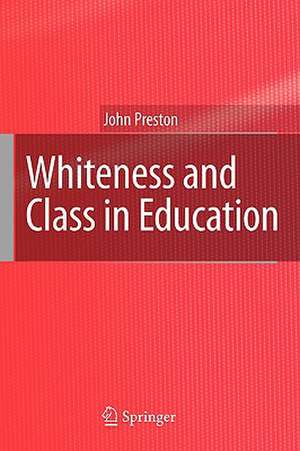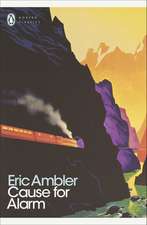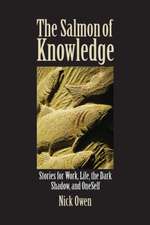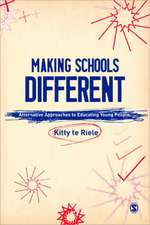Whiteness and Class in Education
Autor John Prestonen Limba Engleză Paperback – 19 mar 2009
| Toate formatele și edițiile | Preț | Express |
|---|---|---|
| Paperback (1) | 637.13 lei 6-8 săpt. | |
| SPRINGER NETHERLANDS – 19 mar 2009 | 637.13 lei 6-8 săpt. | |
| Hardback (1) | 643.34 lei 6-8 săpt. | |
| SPRINGER NETHERLANDS – 16 iul 2007 | 643.34 lei 6-8 săpt. |
Preț: 637.13 lei
Preț vechi: 749.56 lei
-15% Nou
Puncte Express: 956
Preț estimativ în valută:
121.97€ • 125.51$ • 102.81£
121.97€ • 125.51$ • 102.81£
Carte tipărită la comandă
Livrare economică 01-15 martie
Preluare comenzi: 021 569.72.76
Specificații
ISBN-13: 9789048123070
ISBN-10: 9048123070
Pagini: 214
Ilustrații: X, 214 p.
Dimensiuni: 155 x 235 x 12 mm
Greutate: 0.33 kg
Ediția:1st ed. 2007. 2nd printing 2009
Editura: SPRINGER NETHERLANDS
Colecția Springer
Locul publicării:Dordrecht, Netherlands
ISBN-10: 9048123070
Pagini: 214
Ilustrații: X, 214 p.
Dimensiuni: 155 x 235 x 12 mm
Greutate: 0.33 kg
Ediția:1st ed. 2007. 2nd printing 2009
Editura: SPRINGER NETHERLANDS
Colecția Springer
Locul publicării:Dordrecht, Netherlands
Public țintă
ResearchCuprins
White Identities, Practices and Privileges in Education.- How the White Working Class Became ‘Chav’.- Class and Race Strategies in Adult Education.- Smells Like White Spirit.- Policy, Pedagogy and ‘White Supremacy’ in Education.- Take the Skinheads Bowling.- Homeland Insecurity.- Towards a ‘Trash Crit’.- Concluding Remarks.- From Troubling Whiteness to Treason to Whiteness.- From Troubling Whiteness to Treason to Whiteness.
Recenzii
From the reviews:“Preston is a serious academic. The book … is ambitious in scope (including new empirical data as well as wide ranging reviews of the contemporary theoretical literature) and written with a clear voice that does not flinch from critiquing some of the key figures in the field. … In the field of race and class inequities in UK education, this is one of the most important books of the decade. It deserves a wide readership … .” (David Gillborn, Studies in the Education of Adults, Vol. 41 (2), 2009)
Textul de pe ultima copertă
The critical study of whiteness has influenced anti-racist pedagogy and research. A volatile area of study, in terms of the re-centering of white discourses and the appropriation of the writings of black scholars, confronting whiteness has become a controversial but potentially radical way of approaching educational issues. In this pioneering volume critical whiteness studies is applied in the United Kingdom in a variety of educational contexts. Although whiteness is considered to be a system of oppression that benefits white students and teachers in educational arenas it is not necessarily monolithic. Whiteness is flexible and inflected by class to produce new ‘whiteness(es)’ that are no less racist in intent or practice.
Through the use of ethnographic, biographical and documentary research how whiteness ‘works’ in education is revealed. The ways in which working class whites are represented as ‘white trash’ or ‘chav’; the subtle actions of white middle class learners to reduce diversity in adult education and the pre-modern qualities of white ruling class schooling are used to highlight both divergence and congruence in the racial formation of whiteness. Policy issues are also considered, in particular the merits of regulating ‘hate speech’ in universities and the ways in which racist ‘civil defence pedagogies’ have become embedded in educational and homeland security policies.
However, this book does not just consider the practices of whiteness but also how practitioners might consider critical whiteness studies in anti-racist practice. It is concerned with not only identifying how ‘white supremacy’ continues to dominate educational discourse and practice but how it can be resisted.
Through the use of ethnographic, biographical and documentary research how whiteness ‘works’ in education is revealed. The ways in which working class whites are represented as ‘white trash’ or ‘chav’; the subtle actions of white middle class learners to reduce diversity in adult education and the pre-modern qualities of white ruling class schooling are used to highlight both divergence and congruence in the racial formation of whiteness. Policy issues are also considered, in particular the merits of regulating ‘hate speech’ in universities and the ways in which racist ‘civil defence pedagogies’ have become embedded in educational and homeland security policies.
However, this book does not just consider the practices of whiteness but also how practitioners might consider critical whiteness studies in anti-racist practice. It is concerned with not only identifying how ‘white supremacy’ continues to dominate educational discourse and practice but how it can be resisted.
Caracteristici
The first collected book which uses critical whiteness studies to examine education outside of the United States Uses a range of empirical techniques to interrogate whiteness within education in a number of settings (eg it moves beyond schooling) For those interested in ‘race’ issues in education, the book explores a new paradigm though which racism can be explored and confronted













